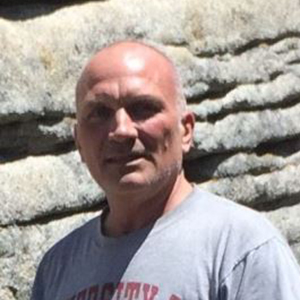
Dr. Steve Blumenshine
California State University, Fresno
Steve Blumenshine is a professor in the CSU-Fresno Biology Department. He maintains an active lab group and research program focused on juvenile Chinook Salmon & their habitats with funding from a variety of sources, including the SJRRP. Much of our research is in close collaboration with SJRRP agency partners. This coming spring Steve will be in southern Germany doing collaborative research on invasive species and climate change effects on Lake Constance under a Fulbright Scholar award.
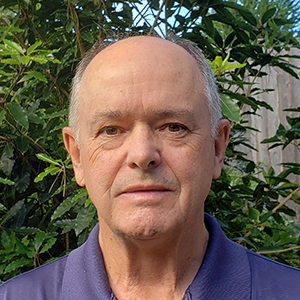
Bart Bohn
San Joaquin River Parkway and Conservation Trust
Bart served 30 years as an officer in the U. S. Army Corps of Engineers. Four of those years were involved in the Salmon Restoration Program on the Columbia River where he worked closely with Native Americans, the Bureau of Reclamation, and National Marine Fisheries Service. Subsequently, Bart served as the Caltrans District 6 Director and the CAO for Fresno County. In retirement, he worked as a consultant for the California High Speed Rail Project and is a former President of the Board for the San Joaquin River Parkway and Conservation Trust.
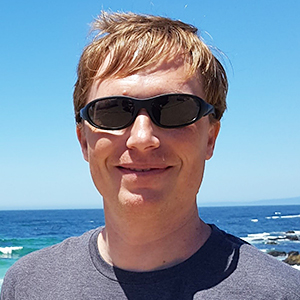
Dr. Oliver “Towns” Burgess
Bureau of Reclamation
Towns is the Lead Fish Biologist for the San Joaquin River Restoration Program. Prior to that, he was a Fish Biologist in Reclamation’s Bay-Delta Office working on real-time and ongoing water operations issues and was a Supervisory Fishery Biologist for the Army Corps of Engineers on the Snake River in Washington. His professional interests focus on aquatic ecology with an emphasis in anthropogenic disturbances to aquatic communities. He received a B.S. from the Marine Science Program at the University of South Carolina and a M.S. and Ph.D. from the Department of Fisheries and Aquatic Sciences at the University of Florida.
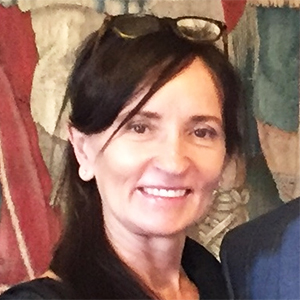
Jean Castillo
National Marine Fisheries Service
Jean has been a hydraulic/fish passage engineer with the WCR’s Environmental Services Branch in Sacramento for nearly four years. She has worked with each of the CCVO Branches in various levels and capacities, assisting with technical reviews or finding scientific based solutions for projects. She has developed scientific connections to the SWFSC, USGS, and UC Davis in working on studies of reintroduction, trap and haul, and sturgeon passage needs, and has provided engineering support on several weir, screen, intake, gate, and barrier projects in the Central Valley. Jean graduated from Southern Illinois University, Carbondale, with Bachelor’s and Master’s degrees in Civil Engineering and a focus on hydraulics and structures. Immediately after graduating she moved to the West Coast and performed bridge load ratings for a private firm before moving to Oregon Parks and Recreation Department (OPRD) to manage projects as a State of Oregon certified Bridge Inspector and manage OPRD’s Bridge Inspection and Maintenance Program. Jean’s experience also includes work at a private bridge engineering firm and as a hydraulic/fish passage engineer for the Oregon Department of Fish and Wildlife, where she designed fish screens and ladders and deconstruction plan sets for dam removal projects. Jean’s four children are all grown, leaving time for biking, hiking, art, gardening, and of course, man’s best friend, her dog, Maya.
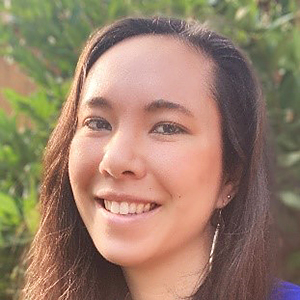
Meiling Columbano
National Marine Fisheries Service
I have been a biologist with the National Marine Fisheries Service (NMFS) since April 2019. Specifically, my position focuses on the San Joaquin River Restoration Program (SJRRP). My role with the SJRRP includes providing technical assistance with the fisheries reintroduction and associated passage projects, and ensuring regulatory consistency with relevant federal laws and policies, such as the Endangered Species Act. Prior to joining NMFS and the SJRRP, I have worked at the State Water Resources Control Board (as an Environmental Scientist), at NMFS (as a contractor), at the Delta Stewardship Council (as a California Sea Grant State Fellow), and at the California Department of Fish and Wildlife (as a seasonal fisheries technician) doing various salmonid monitoring throughout Northern California watersheds. I have a Master of Science degree in Natural Resources, Fisheries from Humboldt State University. My M.S. thesis focused on life history diversity and plasticity of fall-run Chinook salmon in the Shasta River, a tributary to the Klamath River. I also have a Bachelor of Science degree in Marine Biology from the University of California, Santa Cruz.
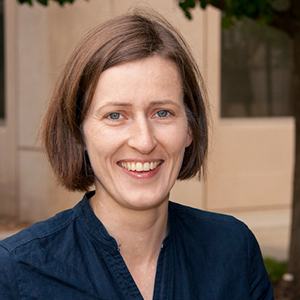
Dr. Helen E. Dahlke
University of California, Davis
Helen E. Dahlke, Ph.D., is an Associate Professor in Integrated Hydrologic Sciences in the Department of Land, Air and Water Resources at the University of California, Davis. Helen Dahlke obtained a PhD degree in Environmental Engineering from Cornell University. Helen’s current research interests include surface water – groundwater interaction, water resources management, vadose zone transport processes, and applications of DNA nanotechnology in hydrology. One of her main research efforts focuses on testing the feasibility of using agricultural fields as recharge sites for groundwater banking.
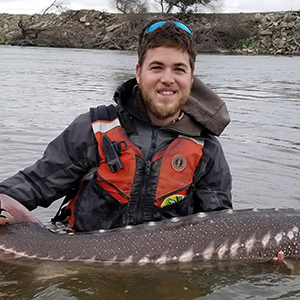
Austin Demarest
U.S. Fish and Wildlife Service
Austin Demarest is a Fish Biologist working in the Lodi Fish and Wildlife Office on the SJRRP leading complex fisheries studies to assess reintroduction of Chinook salmon in the San Joaquin River and inform habitat restoration activities. Prior to the SJRRP, Austin worked on fishery related issues in the Sacramento-San Joaquin Rivers and San Francisco Estuary related to juvenile salmon emigration, timing and survival and white sturgeon and Delta smelt population assessments. He found his passion for aquatic ecology while growing up in upstate New York where he obtained his Bachelor’s Degree (Aquatics and Fisheries Science) from SUNY College of Environmental Science and Forestry. He began his career by conducting research on the speciation of endemic fishes of Palawan, Philippines. After spending time abroad he worked at the Thousand Island Biological Station on the St. Lawrence River where he focused on sportfish population assessments with an emphasis on Muskellunge recruitment and reintroduction as well as wetland restoration.
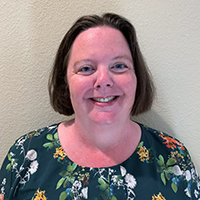
Alexis Phillips-Dowell
California Department of Water Resources
Alexis Phillips-Dowell is a senior engineer at the Department of Water Resources within the South Central Region Office in Fresno. Alexis has a BS in Environmental Resources Engineering from Humboldt State University and is a registered civil engineer. She has been an engineer for over 20 years and has worked at DWR and on various Program projects for over 10 years. The focus on her work at DWR has been related to leading and supporting the hydraulic modeling efforts and fish passage projects for the Program. She is currently managing key projects that DWR will be implementing over the next several years to support the Program. One of those projects are to provide fish passage at the Eastside Bypass Control Structure, which is a high priority barrier along the current Restoration flow path.
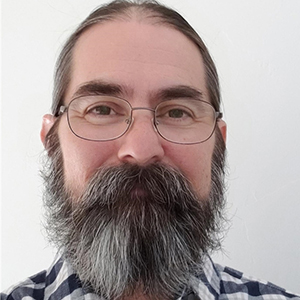
Dave Encinas
California Department of Water Resources
Dave Encinas has over 25 years experience working on river restoration and enhancement projects on the San Joaquin River system for the Department of Water Resources. As a senior engineer and project manager in DWR’s Fresno office, he currently leads efforts to plan, design, and implement multi-benefit projects that further goals of the San Joaquin River Restoration Program, Department of Fish and Wildlife, San Joaquin River Conservancy, and the Wildlife Conservation Board.

Kim Forrest
U.S. Fish and Wildlife Service
I am a California native, having grown up in the Monterey area. My interest in the outdoors and wildlife began early, with our family vacations of month-long trips every summer into the back country of Yosemite and to the family farm in Iowa, and skiing. I attended Monterey Peninsula Junior College and Utah State University, majoring in wildlife biology. I have worked for the U. S. Fish and Wildlife Service for 44 years, all on national wildlife refuges (NWR); starting at Bear River Migratory Bird Refuge in Utah, then assistant refuge manager jobs at Fish Springs NWR in Utah – considered the most isolated refuge in the Lower 48, Charles Russell NWR in Montana, Merced NWR, and Sacramento NWR Complex. I then became the first refuge manager of Humboldt Bay NWR in northern California, and have been the manager at the San Luis NWR Complex for 20 years.
The San Luis NWR Complex is one of the larger complexes in the region, with approximately 30 employees. We focus on managing wetland habitat for up to ½-million waterfowl and ¼-million shorebirds, the second largest riparian forest restoration in California, recovery and de-listing of the Aleutian cackling goose, captive propagation and reintroduction of the highly-endangered riparian brush rabbit, a public use program for about 120,000 visitors per year, implementing a large prescribed fire program, managing a conservation easement program on 190 properties, and designing and building a large visitor center/office that is the first LEED Platinum building in the FWS.
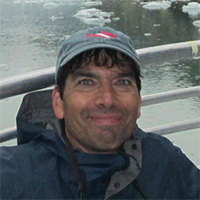
Dr. John “Carlos” Garza
University of California, Santa Cruz
National Oceanic and Atmospheric Administration, Southwest Fisheries Science Center
John ‘Carlos’ Garza is an Adjunct Professor in the Department of Ocean Sciences at the University of California, Santa Cruz and Supervisory Research Geneticist in the Fisheries Ecology Division of NOAA’s Southwest Fisheries Science Center. Carlos leads the Molecular Ecology and Genetic Analysis Team, a joint NOAA/UCSC group that develops and uses molecular genetic data and analytical methods to address questions related to ecology, evolution, conservation and management of marine and aquatic animals and ecosystems. Carlos received B.A. and M.S. degrees from the University of California San Diego and a Ph.D. from the University of California Berkeley. He has 30 years experience in basic research and in the application of genetic methods to conservation and management issues. His work is used to inform resource managers at the international, regional, tribal and local levels. He has authored more than 100 journal articles and his work has been reported on extensively, including in the New York Times, San Francisco Chronicle and Science magazine. He has served on multiple federal Technical Recovery and Biological Review teams for salmon and trout and on the Scientific and Statistical Committee of the Pacific Fishery Management Council, as well as on the California Hatchery Scientific Review Group. He has mentored both UC President’s and Chancellor’s Postdoctoral Fellows and currently serves on the Faculty Advisory Committee of the President’s Postdoctoral Fellowship Program, the Advisory Board of the UCSC Conservation Scholars Program and is an editor of the journal Conservation Genetics. His work has been recognized with four Bronze Medals (NOAA’s highest) and supported by fellowships from the Ford Foundation, the National Science Foundation, and the French Government.
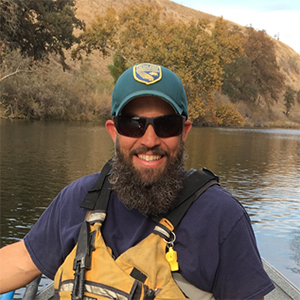
Mike Grill
California Department of Fish and Wildlife
My name is Mike Grill and I am an Environmental Scientist with the California Department of Fish and Wildlife. I have filled various roles within the San Joaquin River Restoration Program since 2011, beginning as a Scientific Aid. During my undergraduate degree at CSU-Fresno, I conducted research on macro-invertebrate drift dynamics in the San Joaquin River and impacts to recreational use resulting from the San Joaquin River Restoration Program. I completed my MS-Biology degree at CSU-Fresno in the spring of 2020. My thesis study focused on thermal tolerances of fall-run Chinook salmon embryos. Currently my research is focused on adult spring-run Chinook salmon holding and movement using acoustic telemetry.
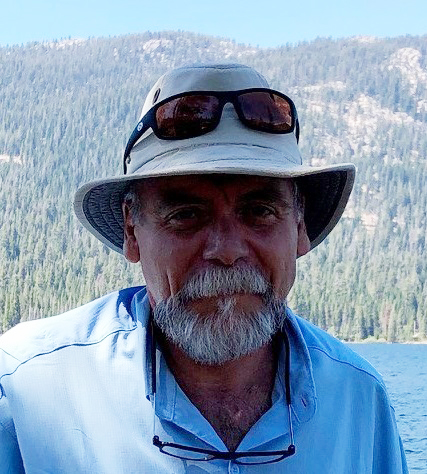
Gerald Hatler
California Department of Fish and Wildlife
Gerald Hatler began working for the California Department of Fish and Wildlife (CDFW) in 1997. His experience has ranged from conducting biological studies to evaluate salmon survival, habitat conditions, fish passage to stream resource evaluations, species and habitat protection, and public use of natural resources. He has been involved with salmon restoration projects on the Stanislaus, Tuolumne, and Merced rivers and, most recently, the San Joaquin River. He has been the CDFW lead on the San Joaquin River Restoration Program (SJRRP) since 2007 and manages the CDFW effort to assist with implementation of the SJRRP Settlement Agreement. Gerald also oversees five state fish hatcheries and the CDFW fisheries program in twelve counties from the Central Coast to the Sierra.
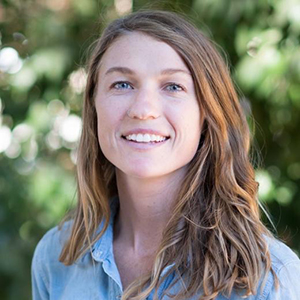
Colby Hause
University of California, Davis
I am a 2nd year Masters student in the Animal Biology program at UC Davis, working with Andrew Rypel and Nann Fangue. Broadly, I am interested in using telemetry as a tool for conservation science. My current research aims to understand the environmental drivers of outmigration mortality by linking broad-scale habitat heterogeneity and survival dynamics of threatened spring-run Chinook salmon. Through improved understanding of the ecological processes that shape critical life history stages, I aim to promote science-based policies that support long-term conservation management of fragile anadromous fish populations.
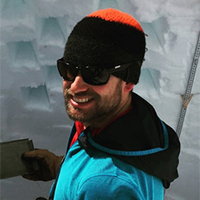
Andrew Hedrick
USDA Agricultural Research Service
Andrew Hedrick is a Post-Doctoral Research Hydrologist at the USDA-ARS Northwest Watershed Research Center in Boise, Idaho. Since 2014, he and his colleagues have been developing new physics-based modeling tools for real-time estimation of snow water content over many of the large watersheds of the Southern Sierra Nevada. These tools make use of ground-based measurements, atmospheric weather predictions, and data collected by airborne and satellite platforms to explicitly solve the energy balance of the snowpack at each hour of the day and over every square foot of these vital natural water towers.
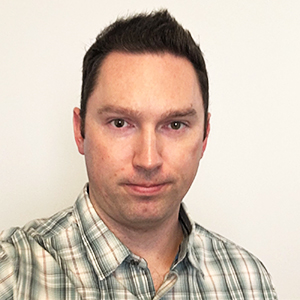
Jarod Hutcherson
Bureau of Reclamation
I have been a biologist with Reclamation since 2010. Since 2012, I have been involved with various projects under the San Joaquin River Restoration Program. On the San Joaquin River, I have participated in Inventory and Monitoring surveys to identify fish species presence/absence in all five reaches of the Restoration Area, helped with adult Chinook salmon trap and haul efforts to move adult salmon from Reach 5 to spawning areas in Reach 1, and contributed to fall-run and spring-run juvenile Chinook salmon monitoring efforts and efficiency evaluations using panel weirs and rotary screw traps. Other notable work outside the San Joaquin includes evaluating side channel enhancement efforts for juvenile salmon production on the Methow River, Washington, evaluating larval fish entrainment at the Tracy Fish Collection Facility, California, and survey efforts to describe side channel connection and potential fish stranding during river flow reductions on the Yakima River, Washington.
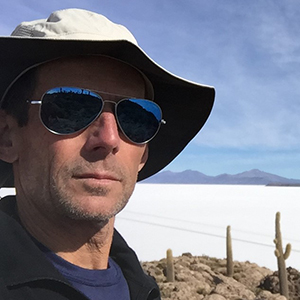
Tom Johnson
Restoration Administrator
Tom Johnson has over thirty five years of experience in resource and energy projects, including extensive experience in water project, hydroelectric and reservoir operations. Tom has been the Restoration Administrator for the San Joaquin River Restoration Program since August of 2013.
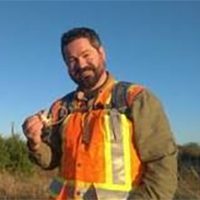
Andrew Minks
Bureau of Reclamation
Andrew Minks is a Natural Resources Specialist for the Bureau of Reclamation in the San Joaquin River Restoration Program (SJRRP). He holds a Bachelor’s of Science in Natural Resource Planning from Humboldt State University and a Master’s of Environmental Science and Management from UC Santa Barbara. Andrew’s Master’s work focused on utilizing remote sensing in a data-poor region of Indonesia to develop a coupled terrestrial and marine model that quantitatively predicts sediment runoff and settlement due to land-use change. In working for the SJRRP, Andrew maintains a variety of roles which span environmental compliance, GIS based spatial analysis and mapping, project management, earth science, remote sensing, and data management.
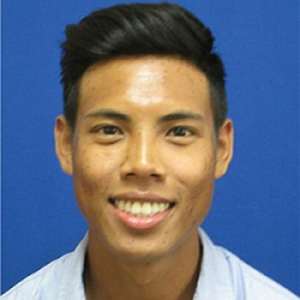
Sothea Oeun
California Department of Water Resources
Sothea is a water resources engineer for the California Department of Water Resources. He is a licensed professional engineer with a master’s degree in environmental engineering and a bachelor’s degree in civil engineering. Sothea has previously worked on subsidence studies related to channel capacity and is currently working on a fish passage project for the San Joaquin River Restoration Program. He strives to approach his work with the idea of sustainability — to research solutions that could balance the need of our natural resources between the environment and people.
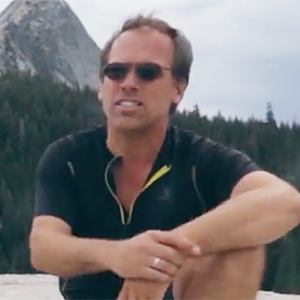
Dr. Thomas H. Painter
Airborne Snow Observatories, Inc.
Thomas H. Painter is a Project Scientist at the Joint Institute for Regional Earth System Science and Engineering at the University of California, Los Angeles and Chief Executive Officer and Founder of Airborne Snow Observatories, Inc. His areas of interest are snow hydrology, water resources applications from mountain snow and ice, radiative impacts of light-absorbing impurities on snow and glacier melt, and multi-sensor remote sensing of snow properties. He was the Principal Investigator of the JPL Airborne Snow Observatory, an integrated imaging spectrometer and LiDAR system to give the first-ever comprehensive, near real-time maps of snow water equivalent and snow reflectivity in mountain basins. He is also Co-Investigator on the NASA Earth Venture Instrument EMIT, an imaging spectrometer to fly on the ISS in 2022 to explore mineralogy of and radiative forcing by desert dust. Dr. Painter has pioneered our understanding of the impacts of dust emission from land use change on snow and ice cover in mountain systems and the hydrologic response and impacts of black carbon on regional glaciation in the Anthropocene. He has developed cutting edge remote sensing and field models for snow properties from multispectral to imaging spectrometer sensors, scanning lidar systems, and radar systems. His efforts resulted in the development of the NASA Western Water Applications Office at the Jet Propulsion Laboratory and the establishment of the Surface Biology and Geology imaging spectrometer measurement concept in the 2017 National Academies Earth Science Decadal Survey. Dr. Painter is Past-President of the Cryosphere Focus Group of the American Geophysical Union. In 2018, he was awarded the NASA Exceptional Technology Achievement Medal and the Bureau of Reclamation’s John W. Keys III Award. In 2019, he was elected Fellow of the American Geophysical Union.
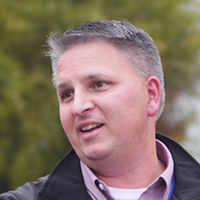
Dr. Donald E. Portz
Bureau of Reclamation
Dr. Portz has been the Program Manager for the San Joaquin River Restoration Program for over the last two years. He officially joined the office in 2015 as Lead Fish Biologist but had been working for the Program since 2010 through Reclamation’s Denver Technical Service Center. Dr. Portz has over 20 years of experience working with Bureau of Reclamation on fisheries issues throughout the western United States with particular focus on California’s Central Valley after receiving a doctorate in Fish Ecology from the University of California, Davis. Throughout his career, Dr. Portz has contributed greatly to fisheries research and survival of Chinook salmon and has been instrumental in the effort to reintroduce spring-run Chinook salmon to the San Joaquin River, where they had been absent for over 60 years.
Throughout his tenure, Dr. Portz has developed strong relationships with the diverse set of stakeholders associated with Restoration Program and has come to appreciate the competing demands on water for fisheries, wildlife, agriculture, industry, and domestic needs. He is known for his determination and holds a strong belief that good science should inform decision making. He is steadfast on moving the Program’s implementation of the Settlement forward and is excited about construction of large in-river fish passage and fish protection projects in the near future, as well as having salmon back in the river!
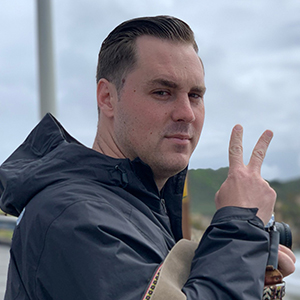
Andreas N. Raisch
U.S. Fish and Wildlife Service
Andreas is a Biological Science Technician working on the San Joaquin River Restoration Program (SJRRP) at the Lodi Fish and Wildlife Office. Andreas has been working with SJRRP for a little over two years, assisting in the development and implementation of fishery investigations for the reintroduction of spring-run Chinook salmon to the San Joaquin River. He obtained a Bachelor’s of Science in Marine Biology at the University of California Santa Cruz, completing a senior thesis looking into the habitat association of the red sea star Echinaster sepositus off the coast of Corsica, France. Since then Andreas has spent his career working in the San Francisco Bay, San Joaquin Delta and the various connecting rivers working with a wide variety of marine, estuarine and freshwater species. While working for various agencies within the region, he developed an interest in restoration and recovery of the native fish populations. Working on the SJRRP team has provided him the opportunity to further develop his interests and actively participate in the recovery of spring-run Chinook salmon in the San Joaquin River.

Donald “Donnie” Ratcliff
U.S. Fish and Wildlife Service
Donald “Donnie” Ratcliff is the Central Valley Supervisor for Fish and Aquatic Conservation with the U.S. Fish and Wildlife Service in the California – Great Basin Region. He has over 20 years of experience working with salmon, steelhead, sturgeon and other native species and habitats throughout California. Donnie supervises Project Leaders at the Lodi and Red Bluff Fish and Wildlife Offices, oversees the USFWS roles in the Central Valley Project Improvement Act and San Joaquin River Restoration Programs and coordinates extensively with other USFWS programs and our partners throughout the Central Valley on fish and water related issues.
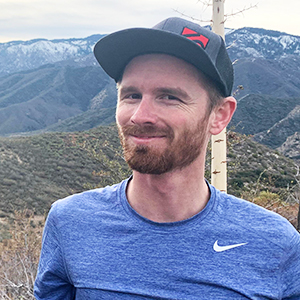
Trent Sherman
California Department of Water Resources
Trent received a BS in geology from Fresno State University, during which time he was a student intern at California’s Department of Water Resources (DWR). After graduating, he interned at the US Geological Survey at the Minnesota Water Science Center and worked in private geotechnical consulting. Trent returned to DWR in 2017 to support the Sustainable Groundwater Management Act and San Joaquin River Restoration Program. Trent is currently pursuing a masters in geoscience at San Francisco State University and avidly pursues white-water recreation.
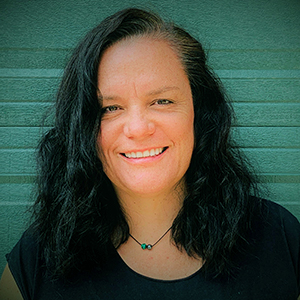
Erin Strange
National Marine Fisheries Service
Erin has 27 years of experience as a fisheries biologist working on anadromous fish issues in the Central Valley of California. Her career started with the California Department of Fish and Wildlife monitoring fish and invertebrates in the San Francisco Bay. Her passion for fisheries resource conservation soon led to employment as a federal fish biologist with the U.S Fish and Wildlife Service monitoring Chinook salmon in the Sacramento-San Joaquin Rivers and Delta, and conducting instream flow assessments throughout the Central Valley. She joined the NOAA Fisheries team in Sacramento in 2003 and has since become an expert in Endangered Species Act implementation, habitat conservation planning, and large-scale fish habitat restoration. She is currently the San Joaquin River Branch Supervisor at NOAA Fisheries and the agency’s program manager for the San Joaquin River Restoration Program. Erin has a Bachelor of Science degree in Environmental Biology/Zoology from Humboldt State University and a Master’s of Science degree in Ecology, Evolution, and Conservation from Sacramento State University. She enjoys hiking, kayaking, gardening, and traveling around the world with her husband and almost-adult children.
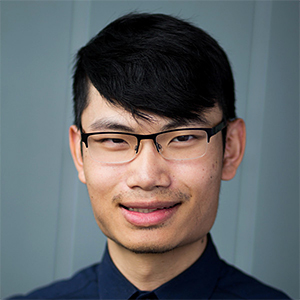
Enoch Tham
California Department of Fish and Wildlife
Enoch is a Scientific Aid for the CDFW with the SJRRP. Originally from Sacramento, Enoch graduated 2019 from Seattle Pacific University, where he was awarded “Best Poster” at SPU’s annual Erickson Conference, and has recently completed his professional certificate in GIS with Michigan State University. He is passionate about utilizing GIS software to assist and inform conservation efforts. In his free time Enoch enjoys playing social deduction games, going camping, and photographing the outdoors.

Emily Thomas
Bureau of Reclamation
Emily is a Hydrologic Engineer and Project Manager for the San Joaquin River Restoration Program (SJRRP) with the Bureau of Reclamation. She has worked for the SJRRP since 2014 on a variety of efforts, including fish passage, hydraulic analysis, the Restoration Flow Guidelines, forecasting, and the Science Meeting. She currently manages the Sack Dam Fish Passage and Arroyo Canal Fish Screen project and is a member of the Millerton Joint Forecasting Team. Emily received her Master’s of Science in Hydrology from the University of Virginia studying boundary layer dynamics in seagrass beds at the Virginia Coast Reserve LTER and her Bachelor’s degree in Civil and Environmental Engineering from the University of Michigan.
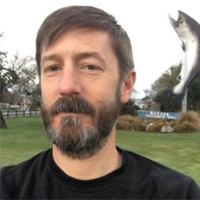
Dr. Mark Tomkins
FlowWest
Mark Tompkins, P.E., Ph.D. is a fluvial geomorphologist and civil engineer who has worked on California Central Valley salmonid habitat restoration and management for over twenty years. He is also the founder of FlowWest, a consulting firm working on aquatic ecosystem restoration and water resources management and developing the best data management and visualization approaches. Mark is one of the independent members of the San Joaquin River Restoration Program (SJRRP) Technical Advisory Committee and has focused on floodplain habitat, seepage management, data management, and engineering design of SJRRP projects.
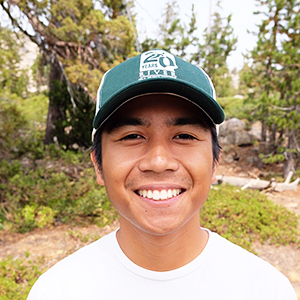
Francis Ulep
River Partners
Francis Ulep is a Restoration Biologist with River Partners. He earned his B.S. in Earth Systems Science at the University of California, Merced. At River Partners, he monitors and manages riparian restoration projects ranging from the Delta to Bakersfield. On the weekends you can find him either baking bread or bouldering.
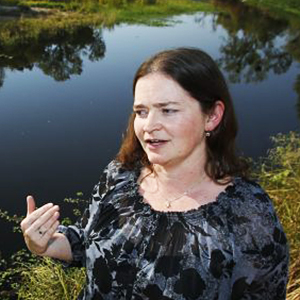
Elizabeth Vasquez
Bureau of Reclamation
For the last five years, Elizabeth (Liz) Vasquez has served as the Restoration Goal Supervisor for the San Joaquin River Restoration Program of the Bureau of Reclamation. During her time leading the Restoration Goal team, Reclamation played a key role in reconnecting the San Joaquin River, the return of spring-run Chinook salmon, and the removal of our first San Joaquin River fish barriers. Prior to leading the San Joaquin River Restoration Goal team, she worked on restoration of the Klamath River as the Environmental Team Lead for Secretarial Determination on Klamath Dam Removal as well as supporting river restoration on the American River, Sacramento River, and Stanislaus River as part of Reclamation’s Environmental Affairs Division and Central California Area Office.
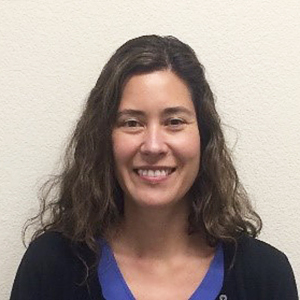
Dr. Lauren Yamane
U.S. Fish and Wildlife Service
Lauren Yamane is a Fish Biologist – statistician for the San Joaquin River Restoration Program with the US Fish and Wildlife Service, stationed at the Lodi Fish and Wildlife Office. She has been with SJRRP since October 2018. Prior to joining USFWS, Lauren completed a postdoctoral fellowship with UC Davis and CDFW focused on informing a long-term monitoring plan for California’s marine protected areas. She also served as a Sea Grant State Fellow for the Delta Science Program. She received her PhD in Ecology from UC Davis in 2016, where she was a NMFS-Sea Grant Population Dynamics fellow and focused on salmon population dynamics. Lauren received her M.S. from University of South Carolina in Marine Science, and her B.S. from UC San Diego.

